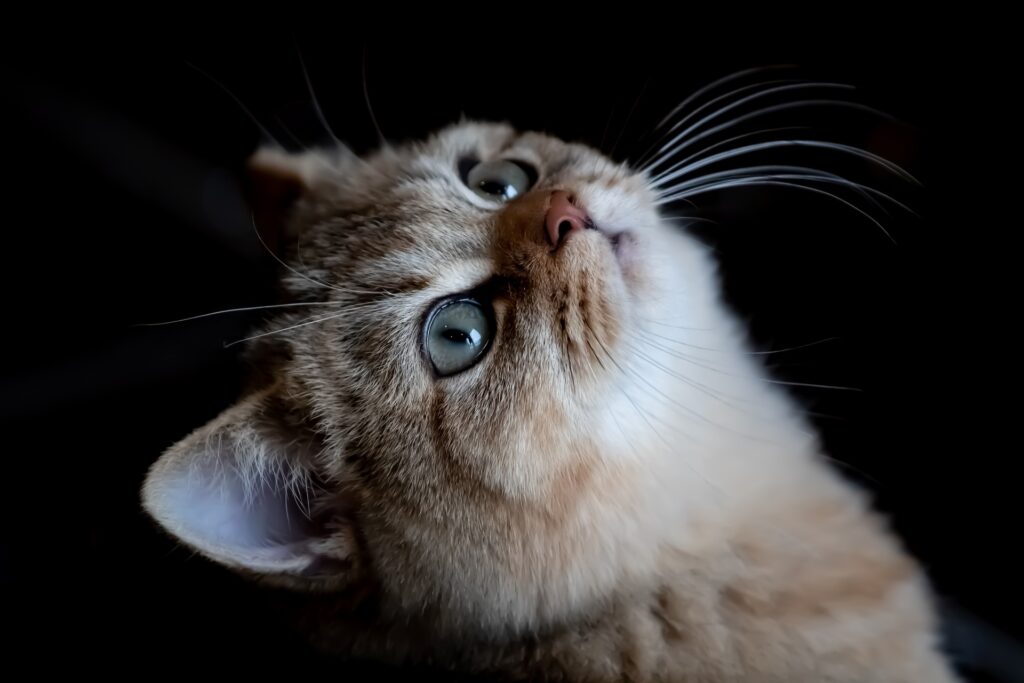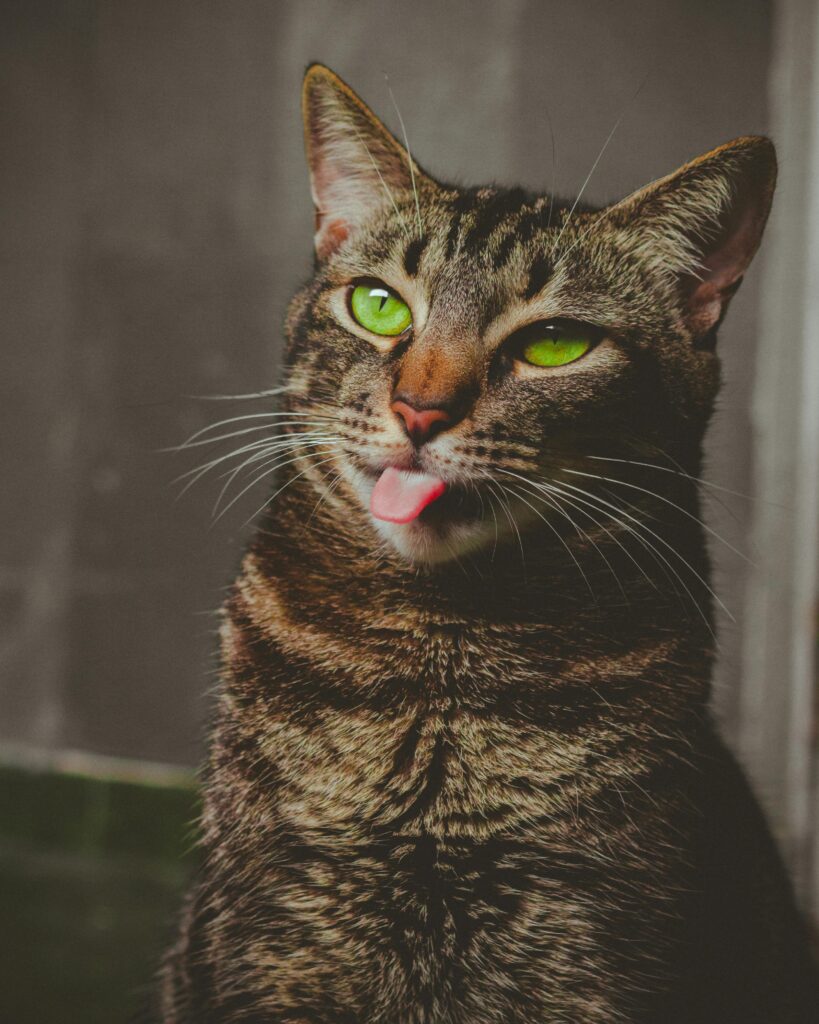Cats are fascinating creatures with unique visual abilities that evolve from birth to adulthood. In this blog post, we’ll explore the journey of a cat’s vision, from the early days of kittenhood to the remarkable night vision capabilities that make them mysterious hunters.
Here is the most frequently asked questions about cat vision:
Cat Vision: Cats and humans see the world differently. Cats have excellent night vision and can detect movement well, but they may not see as many colors as humans do.
Human Vision: Humans have good color vision and detailed daytime vision. We see a wide spectrum of colors, but our night vision isn’t as strong as a cat’s.
Cat Vision: Cats have better night vision than dogs and are more adapted to low-light conditions. They have a higher rod-to-cone ratio, making them superior hunters in dim light.
Dog Vision: Dogs have better motion detection and may see some colors, but their night vision is not as strong as a cat’s.
Cats see the world with a focus on movement and brightness. Their vision is adapted for hunting, with a wider peripheral view than humans.
Cats excel in low-light conditions due to their large eyes, elliptical pupils, and the tapetum lucidum, which reflects light and enhances their night vision.
Cats don’t see as many colors as humans. They are sensitive to blues and greens, but reds may appear more muted to them.
If your cat bumps into things, hesitates to jump, or becomes overly cautious, it could indicate poor vision. Consult your vet for a checkup.
Cat vision is optimized for hunting with a strong focus on motion detection, night vision, and a wider field of view than humans.
Cats see well in the dark. Their night vision is enhanced by the tapetum lucidum, giving their eyes a reflective shine in low light.
Cat vision is excellent for their lifestyle. They can detect movement at low light levels, making them effective hunters.
Cats see a world focused on movement and brightness. Their vision is designed for survival and hunting.
Cats can see well in their immediate surroundings. While exact distances aren’t specified, their vision is adapted for close-range hunting.
Cats see blues and greens more vividly than reds. Their color vision is not as broad as humans, but they excel in other visual aspects.
Cats recognize their owners through shapes and movements rather than detailed facial features. They may perceive you as a distinct figure.
Yes, cats can see in the dark due to their specialized eyes, including the tapetum lucidum that reflects available light.
Cats see with a focus on motion, low-light conditions, and a wider peripheral view. Their vision is adapted for hunting and survival.
Cats see blues and greens more prominently. Reds may appear less vibrant to them.
Yes, cats can see some colors, but their spectrum is limited compared to humans.
Cats see the world as a dynamic, ever-moving environment with a heightened sensitivity to motion and low-light conditions.
Cats can see well in low light, but specific distances in the dark are not explicitly defined.
Cats may appear to see things that aren’t there due to their keen senses and acute awareness of their surroundings. It’s a normal feline behavior.
This behavior may not be directly related to vision but could indicate a dietary issue, boredom, or a medical problem. Consult your vet for advice.
If your cat shows signs like bumping into objects, reluctance to jump, or changes in behavior, it could indicate vision loss. Consult your vet for an examination.
Squinting in one eye could be due to irritation, injury, or an eye infection. Consult your vet for a proper diagnosis.
Eye discharge (eye boogers) can be normal, but excessive or colored discharge may indicate an issue. Consult your vet for guidance.
Closing one eye could be a sign of discomfort, pain, or an eye issue. Consult your vet for a checkup.
Development of Vision in Kittens
Early Days: The visual journey of a cat begins at birth, with their ocular development comparable to a 5-month-old human fetus. Although their eyes remain sealed for the first 5 to 14 days, various factors, including early handling and genetic influences, play a role in accelerating the eye-opening process.
Reflexes and Acuity:
Before their eyes fully open, kittens exhibit reflexes associated with vision. The palpebral reflex and light blink reflex develop within days, paving the way for pupillary responses and the gradual improvement of visual acuity. At around 11 days, kittens start visually following people and moving objects, marking the onset of visual pursuit.
Depth Perception and Binocular Vision:
Between 13 and 25 days, depth perception emerges, followed by visual placing reactions of the forelimbs. As the visual system matures, kittens gain binocular vision by 47 days, allowing them to navigate their surroundings more effectively.

External Visual System Characteristics
Eye Structure: The physical features of a cat’s eye are species-specific. With dimensions of 20 to 22 mm in the anteroposterior direction, cats are slightly myopic, but their eye shape and pupil extremes contribute to enhanced night vision.
Tapetum Lucidum: The tapetum lucidum, a reflective layer behind the retina, enables cats to use up to 50% more available light than humans. This, combined with a large lens and cornea, enhances their ability to see in low-light conditions.
Color Vision: While cats are generally considered color-blind, they do have limited color perception. Their vision is most sensitive to greenish-yellow (554 nm) and blue (447 nm), with brightness playing a more crucial role than color in their visual discrimination.
Night Vision: Unveiling the Cat's Advantage
Rods and Cones: Cats have a higher number of rod photoreceptors than cones, making them well-adapted to low-light conditions. The tapetum lucidum reflects light, enhancing their vision by up to 40%.
Pupil Dilation and Movement Detection:
Large eyes with elliptical pupils allow cats to dilate their pupils significantly, aiding in low-light vision. Rapid eye movements, known as saccades, help cats detect and track fast movements efficiently.
Visual Focusing and Binocular Vision: While cats excel in night vision, their visual focusing is less flexible than humans. Nevertheless, their forward-facing eyes provide them with binocular vision, crucial for accurate judgment of depth and distance, especially during hunting.
Field of Vision:
Cats have a total field of vision around 200°, combining binocular and peripheral fields. This wide visual range, surpassing that of humans, contributes to their keen awareness of their surroundings.
Siamese Cats and Unique Vision Traits
Cross-Eyed Characteristics:
Siamese cats, known for their striking appearance, may exhibit cross-eyed characteristics, affecting their stereoscopic vision. Despite this, many Siamese cats can hunt successfully, adapting to their unique visual traits.
From the early days of sealed eyes to the nocturnal hunting prowess, a cat’s visual journey is a captivating exploration of adaptation and evolution. Understanding these unique traits deepens our appreciation for these mysterious and agile feline companions.



